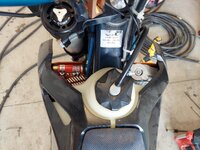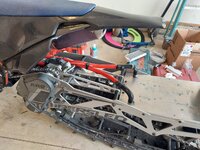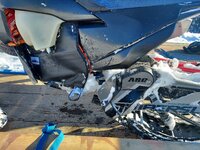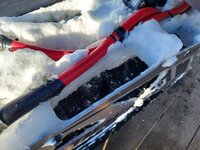To everyone waiting for my response on this thread- I deeply apologize for my absence and lack of a response.
I initially was waiting a few more days to get feedback and do more testing before I make a statement, and then I got busy and forgot.
I will keep tabs on this thread going forward, and answer all questions and concerns.
Also, for anyone that had purchased one and is not getting the cooling they wanted, contact me through email I will get it right for you!
@AllHatNoCattle - the culprit is within the track and skid design itself.
Little bit of background: When I started this project, all we had for testing was the first gen ARO and RIOT kits. On some of the setups we did, the small size heat exchanger was more than big enough for even icy trails. It just never overheated. As
@CATSLEDMAN1 stated earlier: "only takes a dinky heat exchanger to cool a 60hp four stroke" which he has had success with on multiple setups.
And as evident by some other users giving their feedback here- works great! No overheating.
Who is having overheating issues on hard packed trails: those running a Gen2 ARO 3" skid.
From all the testing I could gather along with the help of several other guys, the conclusion we have come to is the skid design (more so the track) is made to perform on the snow and was not built to throw snow up at the heat exchanger. The 3" paddles do a good job to fling off all the snow when going around the rear idler wheel in a nice big roost and it doesnt make it to the heat exchanger. It appears the paddles are made from a softer composite and that plays a part in it.
To give more floatation the new tracks did away with windows down the middle, and snow cannot "exit" from the track as it spins around which would otherwise provide excellent cooling on the hard packed trails.
The solution for riding hard packed trails and not overheating on these specific skids is ice scratchers and /or a snowflap. Without them even snowmobiles overheat pretty quick.
Alternatively, you can run 1 radiator in line with the heat exchanger to give cooling on the trails, and heat exchanger for cooling on the playgrounds. But be aware of your hyfax still needing lubrication! Its very easy to burn up your hyfax with such a setup.
Nonetheless- riding on the mountain through trees or any hill climb it will never overheat which is what really matters. The trail is just for getting there...
Another change on the new skids is the position of the rear upper idler pulley changes the direction and ability for the track to throw snow at the heat exchanger when it is mounted in the forwardmost position.
To overcome this on the Gen 2 ARO skids and help with cooling on the hard packed and icy trails, we have a couple solutions.
- Larger heat exchangers: We now offer 3 sizes.
- Standoff spacers. Allows for more airflow between tunnel panel and heat exchanger. Also allows you to keep your gas can and toolbox mounted on the tunnel panel and no interference with mounting the heat exchanger.
- Hose fitting extension runners to position the heat exchanger in the most optimal location above the rear upper idler wheel.
More info on all of this on my website, take a look I've added alot on there:
https://xrtengineered.com/shop/timbersled-aro-heat-exchanger





